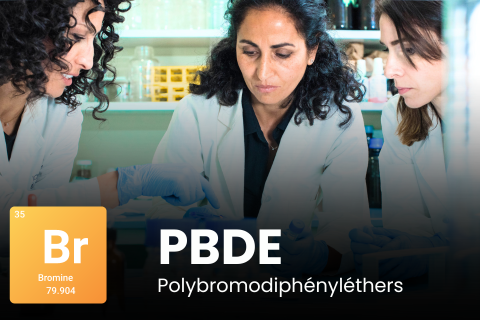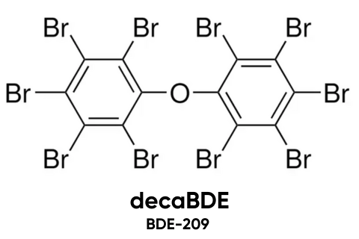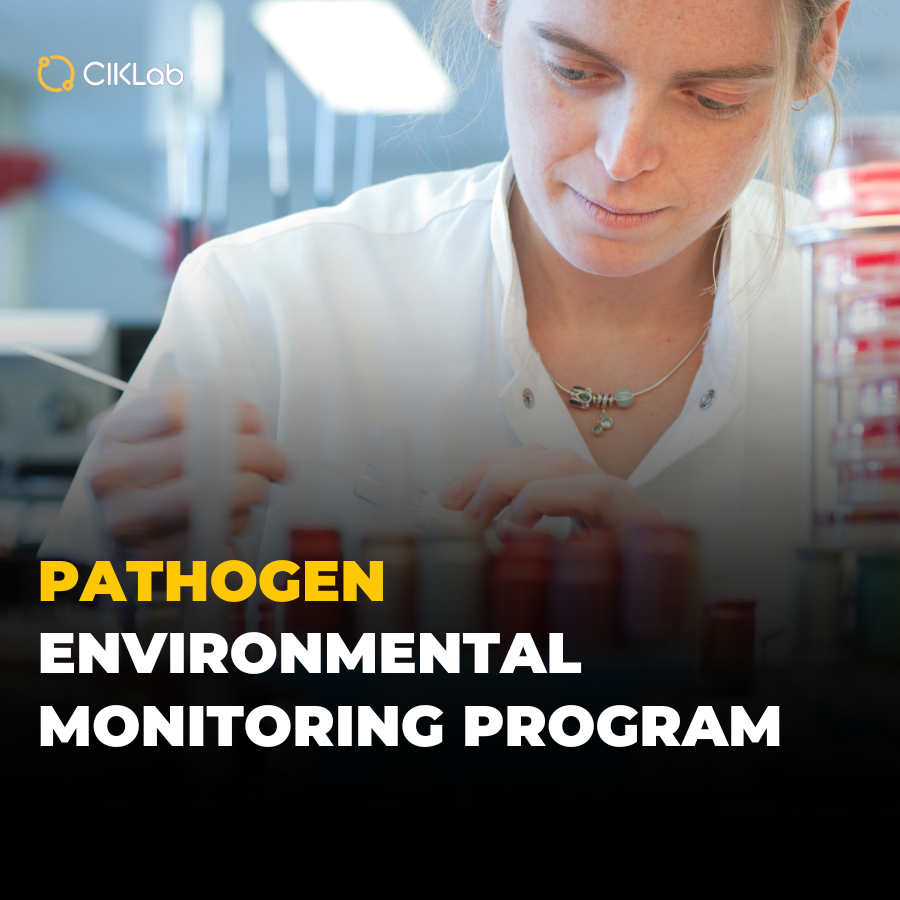Since the 1960s, polybrominated diphenyl ethers (PBDEs) have been used as flame retardants. Their presence in the environment is a major concern due to their adverse effects on health and their ability to contaminate the food chain.

Sommaire :
2) Which food matrices can be contaminated by PBDEs ?
3) How to analyze and quantify PBDEs ?
4) Which laboratories for quantifying PBDEs ?
What are PBDEs ?
PBDEs, or polybrominated diphenyl ethers, are a class of brominated chemical compounds used as brominated flame retardants (BFRs) in various products, including plastics, textiles, and electronic devices. Due to their chemical structure and low degradability, PBDEs persist in the environment, classifying them as Persistent Organic Pollutants (POPs). Their lipophilic nature makes them particularly concerning as they easily enter the food chain and have adverse effects on human health, notably as endocrine disruptors.
PBDEs belong to the Brominated Flame Retardants (BFR) category, along with:
- Hexabromocyclododecane (HBCD)
- Polybrominated biphenyls (PBB)
- Tetrabromobisphenol A (TBBPA)
Bromodiphenyl ethers (BDE) encompass 209 possible congeners, based on the level of bromination (from monoBDE to decaBDE), and for each bromination level, there are several isomers.
According to the EFSA, 8 congeners are of greatest concern in the food chain (CONTAM Panel): BDE-28, BDE-47, BDE-99, BDE-100, BDE-153, BDE-154, BDE-183, and BDE-209, and can be considered as markers of choice.
The highest exposure levels involve BDE-47 and BDE-209

Which food matrices can be contaminated by PBDEs and BFRs ?
PBDEs can contaminate the food chain due to their highly lipophilic nature. They particularly contaminate items rich in fat, such as animal products, especially fatty fish, seafood, meat, butter, and eggs. Animal fats tend to accumulate these compounds, leading to human exposure through food consumption. This information is sourced from the ESTEBAN study conducted by Santé publique France.
PBDEs can be released into the environment during the manufacturing, use, and disposal of products containing them. Once in the environment, they can be absorbed by aquatic and terrestrial organisms, accumulating in the food chain
How to analyze and quantify PBDEs ans BFRs?
The detection and quantification of PBDEs in food products are typically carried out using gas chromatography coupled with mass spectrometry (GC-MS). More recently, high-resolution gas chromatography-high-resolution mass spectrometry (HRGC-HRMS) with isotopic dilution (ID) has become increasingly common for this purpose
Which laboratories for quantifying PBDEs and BFRs?
Find our list of laboratories for the analysis of PBDEs and BFRs in food.
💡 These articles might also interest you :
>> 7 essential labs for PFAS testing in 2024 !
>> Quality Control plans for Food Industry, how to be more efficient?
>> How to simplify the process of food safety testing ?
©2023 ciklab.com . All rights reserved.





